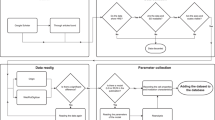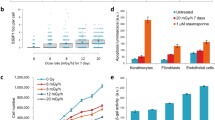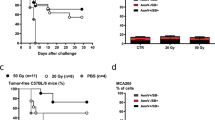Abstract
THE ability of mammalian cells to recover from sub-lethal X-ray damage was first demonstrated by Elkind et al.1, who found that the effect of two doses separated by an interval of time was less than the effect of the same total dose given as a single exposure. This recovery phenomenon has been confirmed in vitro and in vivo in a wide variety of mammalian cell types2–5. These investigations characterized the dependence of radiation sensitivity on the interval between divided doses as having an initial increase to a maximum followed by a minimum and a subsequent new maximum plateau. The nature of the recovery curve between the fractionated doses suggested that the curve may be the result of two opposing reactions and that one reaction at least may be dependent on the metabolic state of the cell. Hence, the recovery curve may be subject to alteration when a major metabolic process is inhibited. We recently reported that the repair processes were operative under conditions in which DNA thymine was partially replaced by 5-bromouracil5. Reported here are the results of experiments designed to test whether the recovery phenomenon requires uninterrupted DNA synthesis during the interval between fractionated doses. In these experiments 5-fluoro-deoxyuridine (FUDR) was used as an inhibitor of DNA synthesis.
This is a preview of subscription content, access via your institution
Access options
Subscribe to this journal
Receive 51 print issues and online access
$199.00 per year
only $3.90 per issue
Buy this article
- Purchase on Springer Link
- Instant access to full article PDF
Prices may be subject to local taxes which are calculated during checkout
Similar content being viewed by others
References
Elkind, M. M., and Sutton, H., Rod. Res., 13, 556 (1960).
Hornsey, S., and Silini, G., Rad. Res., 16, 712 (1962).
Lockart, B. Z., Elkind, M. M., and Moses, W. B., J. Nat. Cancer Inst., 27, 1393 (1961).
Till, J. E., and McCulloch, E. A., Rad. Res., 18, 96 (1963).
Kim, J. H., Eidinoff, M. L., Delihas, N., and Laughlin, J. S. (abstract), Rad. Res., 22, 204 (1964).
Eidinoff, M. L., and Rich, M. A., Cancer Res., 19, 521 (1959).
McIntire, F. C., and Sproull, M. F., Proc. Soc. Exp. Biol. and Med., 95, 458 (1957).
Cohen, S. S., Flaks, J. G., Barner, H. D., Loeb, M. R., and Lichtenstein, J., Proc. U.S. Nat. Acad. Sci., 44, 1004 (1958).
Heidelberger, C., in Biological Approaches to Cancer Chemotherapy, edit. by Harris, R. J. C. (Acad. Press, New York, 1961).
Berry, R. J., and Oliver, R., Nature, 201, 94 (1964).
Elkind, M. M., Whitmore, G. F., and Alescio, T., Science, 143 (1964).
Author information
Authors and Affiliations
Rights and permissions
About this article
Cite this article
KIM, J., EIDINOFF, M. & LAUGHLIN, J. Recovery from Sub-lethal X-ray Damage of Mammalian Cells during Inhibition of Synthesis of Deoxyribonucleic Acid. Nature 204, 598–599 (1964). https://doi.org/10.1038/204598a0
Issue Date:
DOI: https://doi.org/10.1038/204598a0
This article is cited by
-
Über die Wirkungen der Gammastrahlen auf Algen (Desmidiaceen)
Protoplasma (1966)
Comments
By submitting a comment you agree to abide by our Terms and Community Guidelines. If you find something abusive or that does not comply with our terms or guidelines please flag it as inappropriate.



